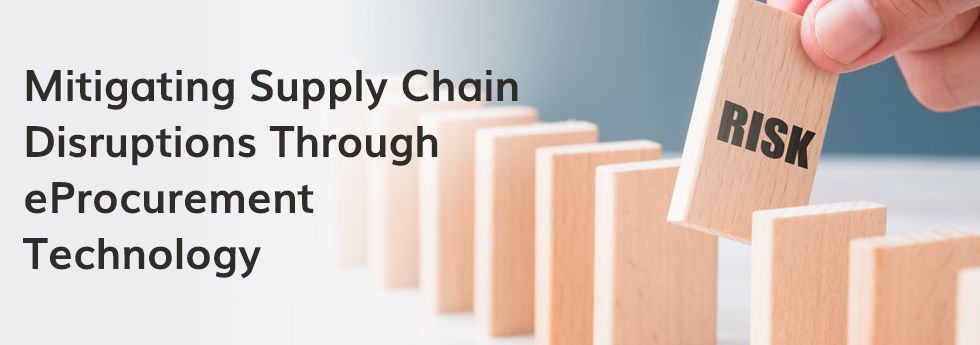Supply chain interruptions, triggered by natural disasters, geopolitical tensions, or supplier failures, present significant challenges for organizations globally. These disruptions often lead to financial losses, operational delays, and long-term reputational damage. As businesses increasingly rely on digital systems for procurement, managing these risks has become even more critical. The complexity of global procurement networks with regionally dispersed suppliers further complicates risk management.
Inhaltsverzeichnis
ToggleThe Complex Landscape of Supply Chain Risk
Traditional procurement processes often fail to keep up with modern challenges, hindered by poor visibility and manual workflows. In contrast, eProcurement systems offer significant advantages in identifying and mitigating risks. These technologies enable real-time monitoring, data integration, and process automation, all of which contribute to a more resilient supply chain.
This article explores how eProcurement platforms address these risks through key strategies and technologies, helping organizations improve decision-making, anticipate disruptions, and build stronger supply chain relationships.
How Technology Identifies and Prevents Procurement Risks
Real-Time Monitoring and Alerts
eProcurement systems leverage advanced analytics and real-time data to track supplier performance, inventory levels, and market conditions. By analysing multiple sources of data, organizations can detect early signs of potential delays or quality issues before a customer escalation.
Predictive analytics tools can model supply chain bottlenecks based on historical trends, providing procurement teams with alerts that help them take proactive action, such as switching suppliers or adjusting inventory levels to mitigate risk.
Data Integration Across Systems
Centralized eProcurement platforms consolidate data from diverse sources, creating a unified view of the supply chain. By integrating supplier performance, financial health, and logistical data, businesses can more accurately assess potential risks and vulnerabilities.
For example, if a supplier’s financial instability is detected alongside delivery delays, companies can take steps to diversify their supplier base or renegotiate contracts. This comprehensive strategy enhances risk mitigation by offering deeper insights into supplier viability.
Automation and Decision Support
Automation is a cornerstone of eProcurement, helping reduce human error and accelerate critical procurement tasks such as contract management, supplier onboarding, and compliance checks. These automations also minimize the risks associated with manual processes, such as missing regulatory requirements.
AI-powered decision support systems further enhance procurement strategies by offering data-driven recommendations. For instance, AI can recommend cost-effective suppliers based on historical performance and current market conditions. During times of geopolitical instability, for instance, these systems may suggest shifting procurement activities to more stable regions, helping companies stay agile in volatile environments.
Building Resilience Through Supplier Collaboration
Effective risk management also hinges on strong supplier relationships. eProcurement systems foster better communication and collaboration, enabling businesses and suppliers to work together more transparently. Shared platforms enable real-time updates, fostering agility and strengthening trust between businesses and suppliers. For example, if a supplier faces delays due to raw material shortages, an eProcurement system allows for swift communication, enabling procurement teams to adjust delivery schedules or source from alternative suppliers.
Conclusion
As global supply chains grow more interconnected and vulnerable to disruption, the role of eProcurement in mitigating these risks will become increasingly indispensable. As eProcurement systems become more integrated with IoT devices and real-time data sources, companies will gain unprecedented visibility into their supply chains, enabling faster, more informed decision-making. By adopting these technologies, organizations are not only responding to immediate threats but also laying the foundation for a more resilient, efficient, and adaptive procurement strategy—one that can weather future disruptions and keep operations running smoothly.



